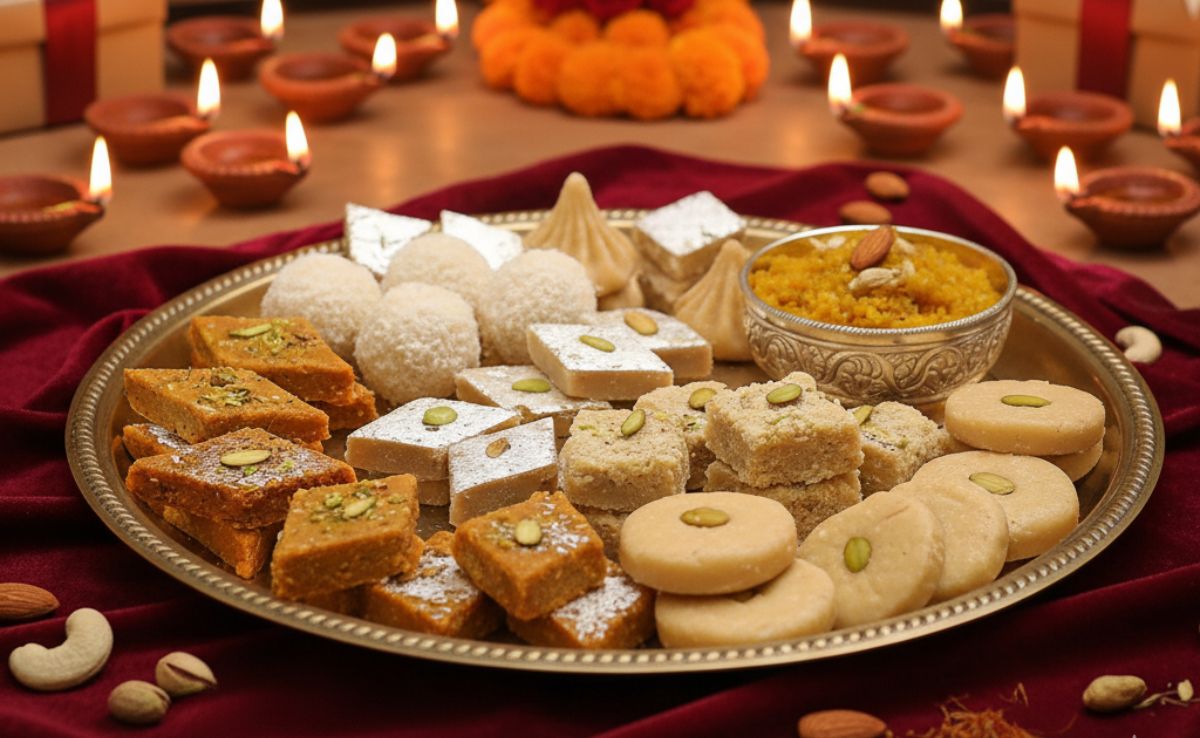As Diwali 2025 approaches, our homes are filled with the smell of simmering milk, ghee, and sweets. From making kheer to kneading mawa for barfis, milk becomes the heart of festive cooking. But amid the celebrations, one serious problem often goes unnoticed: milk adulteration. With demand skyrocketing, several suppliers mix it with adulterants that resemble pure, white milk. The result? Fake milk not only spoils your mithais but can also harm your health. The good news is that you don't need a lab test to find out if your milk is pure. Here are some simple ways to check milk adulteration at home using simple kitchen ingredients, so you don't compromise your health this festive season.
Also Read: Avoid Adulterated Mawa This Diwali: How To Spot It, And How To Make It At Home
Why Milk Adulteration Increases During Diwali Season
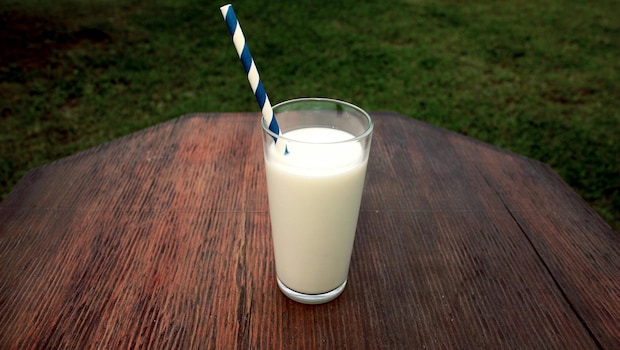
Pure Vs Adulterated Milk (Photo: Pexels)
During festivals like Diwali, the demand for milk, khoya, and other dairy products reaches its yearly peak. Sweet makers, halwais, and small dairies often face supply shortages, which pushes some of them to use shortcuts. This leads to adulterated milk that not only reduces milk's nutritional value but also poses serious health risks.
Why It Is Important To Choose Pure Milk | Health Benefits Of Consuming Milk
Pure milk is a complete food. It is rich in calcium, protein, vitamins, and healthy fats. This is why it is important to get pure, unadulterated milk and use it while making your homemade delights this Diwali 2025. Here's how milk benefits your body:
1. Boosts bone health and muscle strength with natural calcium and protein.
2. Supports immunity and gut health due to its rich nutrient profile.
3. Helps regulate metabolism and energy levels.
4. Aids digestion when used in traditional Indian sweets.
5. Keeps skin and hair healthy with vitamins B12 and D.
Real vs Fake Milk: How To Check | How To Spot Fake Milk | How To Know If Milk Is Adulterated
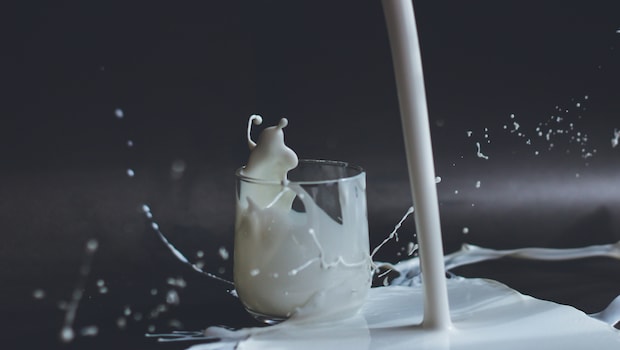
Pure Vs Adulterated Milk (Photo: Unsplash)
These at-home milk adulteration tests are simple, reliable, and based on guidelines from the Eat Right India movement under the FSSAI's DART (Detect Adulteration with Rapid Test) initiative.
1. The Water Test
Place a drop of milk on a polished or slanting surface. If it moves slowly and leaves behind a white trail, your milk is likely pure. If it flows quickly without leaving any mark, it may be mixed with water.
2. The Detergent Test
Mix equal parts of milk and water in a clean bottle. Shake well. If it produces thick, foamy bubbles like soap, it could contain detergent, one of the most common adulterants. Pure milk forms only a thin frothy layer.
3. The Starch Test
Add a few drops of iodine solution to your milk sample. If the liquid turns blue, it means starch is present, added to thicken diluted milk and make it look creamier.
4. The Texture Test
Rub a few drops between your fingers. Adulterated milk feels slippery or soapy. Upon boiling, it may turn yellowish and leave a bitter or chemical aftertaste.
What Happens When You Consume Adulterated Milk
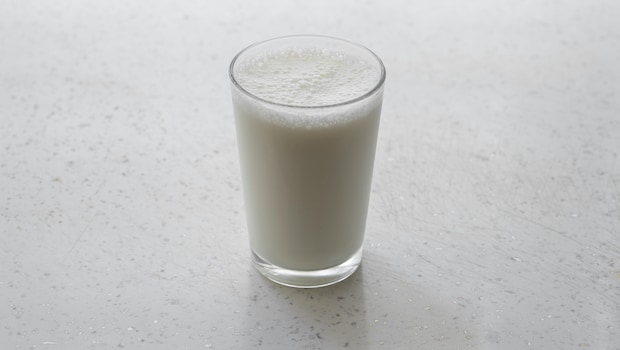
Pure Vs Adulterated Milk (Photo: Unsplash)
Consuming fake or adulterated milk can cause immediate and long-term health problems. Here are some side effects of adulterated milk you should watch out for this Diwali 2025:
1. Digestive Issues: Bloating, diarrhoea, or nausea can be caused by detergent or urea contamination.
2. Food Poisoning: Contaminated milk can carry harmful bacteria that can lead to food poisoning.
3. Chemical Exposure: Prolonged intake can irritate the intestines and affect kidney function.
4. Nutrient Loss: Diluted milk offers little to no protein, fat, or vitamins. If you consume it for too long, it can make you nutrient-deficient.
5. Allergic Reactions: Certain adulterants, like synthetic whiteners or starch, can trigger allergies in sensitive individuals.
How To Make Sure You Are Buying Pure Milk
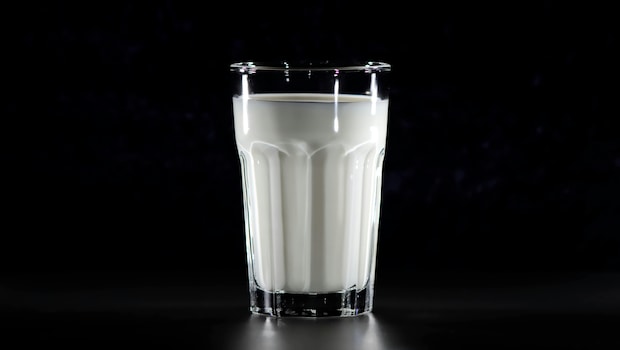
Pure Vs Adulterated Milk (Photo: Pexels)
During the festive season, the vigilance on what ingredient you choose also increases. Here are some easy ways to ensure you are buying quality milk:
1. Buy milk only from trusted brands or reputed dairies with FSSAI certification.
2. Avoid loose or unlabelled milk sold in open containers.
3. Check packaging for expiry dates and batch codes.
4. Always boil milk before consumption to kill pathogens.
5. Store in a refrigerator and consume within 24 hours.
Also Read: Suspected Adulterated Ghee, Halwa, Mawa Worth Rs 12 Lakh Found In Indore During Raid
So, keep these points in mind before you buy milk this festive season. Happy Diwali 2025!
About Nikita NikhilMeet Nikita, a passionate soul with an insatiable love for two things in life: Bollywood and food! When she's not indulging in binge-watching sessions, Nikita can be found behind the lens capturing moments or expressing her creativity through painting.
